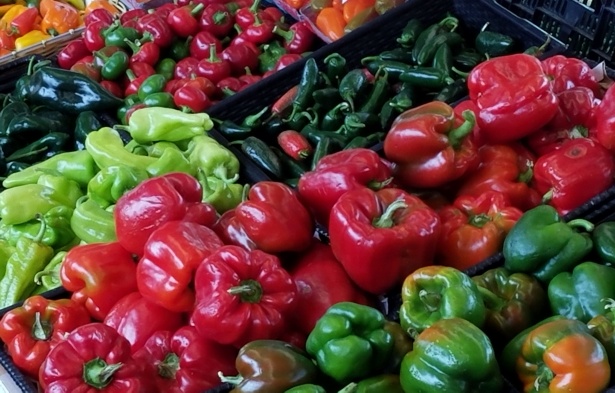By Erin Wyatt A Recent ASU Nutrition Student
The state of Arizona has a huge problem with hunger among its citizens. Approximately 17.8% of the state’s population is considered to be food insecure.1 When you compare this number to the national average of 15.9%, it is distressing.1 The same goes for the averages of the number of children in Arizona that face hunger in relation to the national statistic.1 Individual who are food insecure do not have the certainty that they will be able to acquire adequate amounts of nutritious foods due to low income or availability.2 These numbers seem especially surprising due to the abundance of meat and produce that Arizona yields.
Food deserts are found in areas where healthy food cannot be regularly accessed within a reasonable distance.2 This occurs because high-quality food, found in grocery stores, are not generally found in low-income or less populated areas. The larger cities are more densely populated and produce more money, which attracts grocery stores containing an abundance of superior products. Arizona appears to have very expansive food deserts. This plays a role in creating more food insecurity, as residents to do not have access to the nutritious food they require within the vicinity of their homes. The areas in Arizona with the most significant food deserts seem to occur outside of the major cities. These rural areas contain citizens that are very spread out, covering quite a bit of land. Also, these food desert areas contain a high amount of individuals without access to a vehicle. This limits the ability of its inhabitants to reach the far destinations that offer healthy food.
How can Arizonians help reduce the upsetting amount of its citizens who are going hungry? Luckily, the Department of Economic Security provides Nutrition Assistance, as well as partners with many charitable programs. For example, the United Food Bank, St. Mary’s Food Bank Alliance, and the Association of Arizona Food Banks, to name a few. These types of associations provide about 1,300 pantries and food banks across the state to reduce hunger.3 Another component of the Nutrition Assistance program is the ability to use the benefits at participating farmer’s markets, where you can find them on Fill Your Plate and double up Arizona can be found here. These markets are also providing free fruits and vegetables if these benefits are utilized in the markets.4

Other cities have implemented some creative solutions to reach those who are unable to access healthy food in their area. An example can be found in Memphis, where a mobile grocery store, called the “Green Machine,” travels on different days to areas where residents need access to fresh produce.2 Bringing the store to the people would eliminate obstacles that otherwise prevent them from obtaining healthy food. Another potential solution would be to provide free transportation from food desert areas to grocery stores or farmer’s markets. One of the simplest ways that individuals can personally aid in reducing hunger in Arizona is to donate or volunteer for a charitable food program. A list of wonderful organizations can be found here. We should not be living in a time when people go hungry, especially in our own backyards.
Looking for more tips and tricks like this to keep you family happy and healthy? Check out the Fill Your Plate Blog. Looking for some new recipes to try out? Check out the Recipe Section of our website. How about some fresh produce that the whole family will enjoy? Check out the local Farmers Markets near you.
References:
- Mary’s Food Bank Alliance. Learn. First Food Bank Web site. https://www.firstfoodbank.org/learn/. Accessed April 11, 2019.
- Phillips R, Wharton C. Growing Livelihoods: Local Food Systems and Community Development. London and New York: Routledge; 2016.
- Arizona Department of Economic Security. Coordinated Hunger Relief Program Community Partners. Retrieved from https://des.az.gov/content/coordinated-hunger-relief-program-community-partners#food. Accessed April 12, 2019.
- Pinnacle Prevention. Double Up Arizona. Retrieved from http://www.doubleupfoodbucksarizona.org/. Accessed April 15, 2019.

